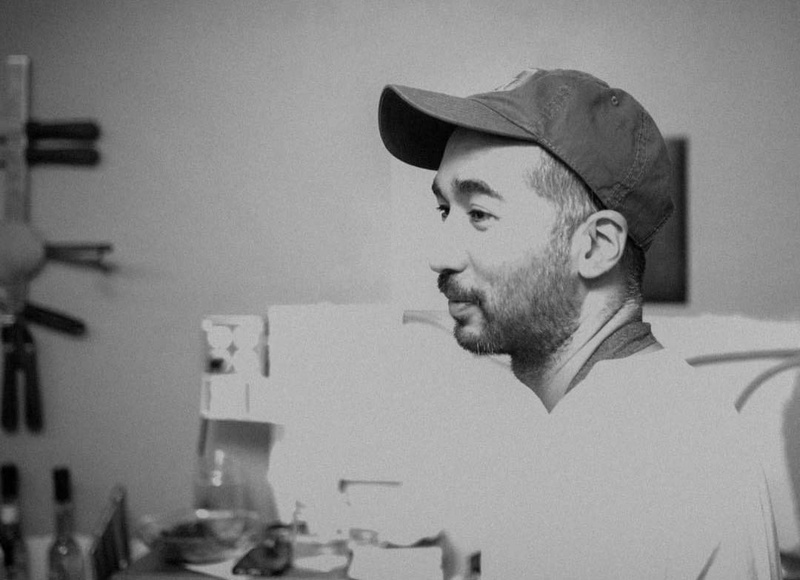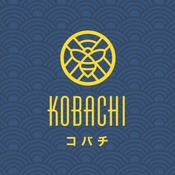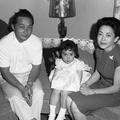What does Japanese or Nikkei food in Canada look like? Taste like? Who better to ask than the executive chef and owner of Kobachi Japanese Cuisine, Ron Elmaleh. Ron is a Japanese Moroccan who was born in Israel and grew up in Japan. He went to school in the United States and currently resides in Alberta, Canada. Ron’s diverse cultural and culinary experience provides a unique perspective on how we can understand and appreciate Nikkei food, but before we delve into the topic, first, here is a little about his restaurant.
Nestled in the quiet town of Sherwood Park in Alberta, Canada, and tucked away in a plaza on Festival Lane, Kobachi is a small, but cozy and inviting, restaurant that is well known for serving clean and simple Japanese flavors. It’s the first mom-and-pop sushi restaurant in the area that has gained a reputation amongst locals for its menu that prioritizes sustainability and one that is committed to “conscious and balanced eating.”
Ron’s food sustained my soul while I was completing my doctoral studies at the University of Alberta, and I have many fond memories of dining there during the pre-COVID days. I always looked forward to the weekends to not only indulge in succulent duck sushi, wagyū tataki, hotate batā—all paired nicely with sake—and tatsuta age (Ron’s favorite, a gluten-free option for karage served with a side of homemade lemon aioli), but to learn about his passion for food, which helped me put into perspective what it means to consume Japanese cuisine in Canada.

I grew up with a father who is a chef and restaurant owner in Ontario. Having worked in the restaurant businesses myself in both Ontario and Alberta, I’ve seen the Japanese food scene change and shift to meet the needs of hungry customers. When I was a teen, I recall that there weren’t as many Japanese restaurants compared to now. Sushi was even considered “gross” back when I was a kid, and I was teased for belonging to a culture that ate (raw) fish, but now it’s considered palatable, and you’ll find sushi buffet shops popping up on every street corner like Starbucks. It’s an exaggeration to be sure, but I think there is truth in the fact that Japanese cuisine has become readily available thanks to the globalization of food cultures in North America.
Consequently, the question of authenticity frequently comes up in casual talks about the current landscape of Japanese restaurants in Canada. This question, though, is a contested one among chefs, entrepreneurs, cultural ambassadors, academics, and foodies such as myself. Rather than deriving at a single view or conclusion, I think it’s more important to first listen to different narratives, histories, and experiences that shape varied approaches to making Japanese food outside its place of origin, and to acknowledge that there is more than one brand of Nikkei food because chefs adapt to their environment in different ways. As Ron puts it, “After all, it's who you cook with and for.”
I remember having conversations with Ron about what it means to serve “authentic” Japanese food in Canada and how making adjustments to a menu for a chef, such as my father, who was traditionally trained as a sushi chef in Japan, wasn't easy. I remember that when my father established his own restaurant, he showed reluctance and resistance to serving sushi that contained mayonnaise and cheese, but he eventually warmed up to the idea in order to build a community around the food he dedicated his life and profession to make. Perhaps, then, Nikkei food is inspired by the people and community that chefs are part of, as well as by the ingredients that chefs have access to. They pay respect to and preserve the art of Japanese cooking techniques and flavors, but represent them in new, exciting ways for their customers. There are some things that chefs are willing to change and others not, but it ultimately boils down to training, respect for food, and individual preference, and all of this is difficult to measure on a scale of authenticity. At the same time, probably due to my father’s influence, I still disagree with sushi buffet shops serving maki with strawberries or mangos and calling it sushi 寿司.
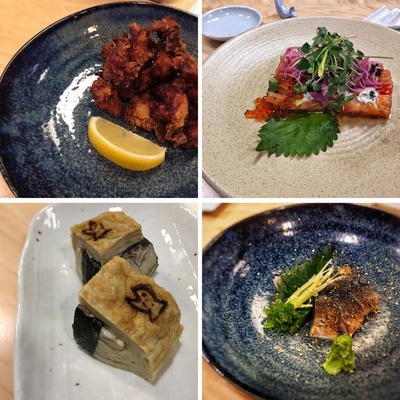
Ron speaks of how the Japanese food scene in California, with its access to bountiful food resources, is quite different from his experience in Sherwood Park, but he’s up for the challenge. Ron’s exposure to the culinary world, which started in his parents’ kitchen as a child and his professional experience with chefs from around the world, from Israel to Japan to the United States and Canada, informs how he conceptualizes the food he serves. Having worked in three different Japanese restaurants in Edmonton, Alberta, Ron says that Kobachi was inspired by a vision to offer alternatives to deep-fried and heavily dressed foods and to portray Japanese food more accurately by taking a sustainable approach that focuses on celebrating organic and local ingredients and having gluten-free options. You won’t find any bubble tea, ramen, or tempura at Kobachi, and Ron observes that such a decision is crucial in Edmonton’s current Japanese food scene.
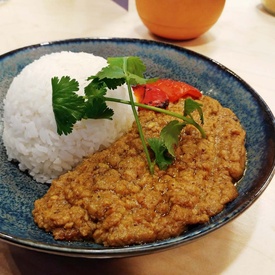
Ron’s creativity and inventiveness are evident in his menu and weekly specials. Each of his dishes tells a story about the past and present, about his identity and training abroad, and about how he adds his own flair. For example, his shakshouka served with crispy okoge rice chips, fuses together Ron’s Moroccan and Japanese roots; his minced beef curry is another fusion dish, or should we call it a Nikkei dish? Although these items are currently not available, Ron is preparing to explore more Moroccan cuisine and see where it meets Japan in the near future!
At the end of the day, labels don’t seem to matter to Ron, as he states, “I feel like Japanese and Nikkei cuisine is similar. The core or the root is the same, but Nikkei has adapted to the new environment. It has changed to satisfy its new needs, using new ingredients that are available in the land and making itself available to market to the Nikkei and to the ‘native’ Japanese people as if acting like a bridge between the country it originated in, and the new.”
* * * * *
Stay updated about Kobach's dine-in hours and specials by following their Instagram and Facebook and or checking out their website: www.kobachi.ca
*Kobachi is a double entendre, meaning both small plates and bowls and small bees, which informs both the restaurant’s concept and logo design.
What Is Nikkei Food?
Saturday, February 26, 2022
Join Discover Nikkei for a multilingual, virtual program exploring the topic of Nikkei food with a presentation, small group discussions, and optional networking opportunity following the program.
Learn More
© 2022 Mimi Okabe


